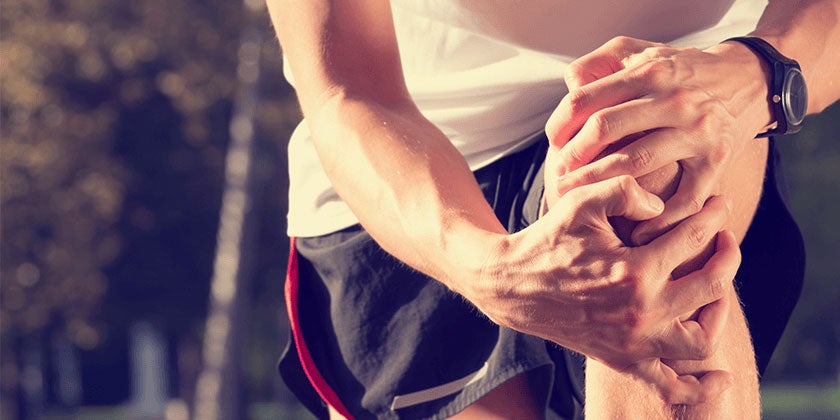Mythbusting: Is running really bad for your knees?

Running is bad for your knees —true or false? No doubt at some stage during your life you have been warned of the dangers of running, particularly the wear and tear it can have on your knees. But is this really true? The general consensus is that this is mostly untrue and it’s not the actual running that is bad for your knees, but not knowing how to care for them that results in runner’s knee or ongoing knee pain.
A recent study funded by the National Institute for Health Research University College London Hospitals Biomedical Research Centre concludes running is not bad for healthy knees and discovered in some cases it could also help rebuild middle-aged knees. However, they cautioned that long distances could result in problems if runners failed to pay attention to good knee health. La Trobe University here in Australia also did a similar study that concluded that running at a recreational level is not linked to knee osteoarthritis, and that the benefits of running far outweigh any perceived risks.
Here's quick snapshot of how our knees work while we’re on the move, and what you can do to help prevent knee pain and injuries.
The knee joint
The knee joint is one of the most complicated joints in the human body and operates like a door hinge, allowing the knee to extend and bend back and forth, with limited sideways movements. There are several different parts of the knee - tendons, ligaments, bone, cartilage and meniscus cells - and once damaged, there is little evidence that supplements such as glucosamine/chondroitin have significant effect.
What causes knee pain?
Factors that impact knee health include being overweight, previous injuries such as dislocation, sprains and tears, and body alignment. Tendonitis and arthritis can also cause knee pain making it difficult to run.
How to care for your knees to avoid runner’s knee
Here are some ways you can protect your knees while running.
Wear the appropriate running shoes
Not all sneakers are created equal. It’s important to have your running gait analysed by a shoe specialist or podiatrist. You need shoes that provide good arch support and compensate for the way your body aligns when you run—for example, people who tend to wear out the outer edges of their soles typically have flat feet and therefore require shoes with higher arches. Get shoes that offer the support where you need it most.
Analyse your running gait and body alignment
If you experience knee pain while running or walking, it may be due to body misalignment such as overpronation (your foot naturally rolls inward) or under pronation (foot rolls outward putting pressure on ankles and toes), tilted pelvis, weak hip muscles or lower back issues. Consult with a sports injury specialist who can work with you to help alleviate discomfort through rehabilitation exercises and stretches, increasing functionality and realignment.
Choose the right running surface
Running through one of Australia’s national parks or at the beach for the views sounds picturesque, but your choice of running surface can put more strain on your knees. If you are prone to knee pain, avoid sand or undulating terrain to reduce impact. Running downhill increases the amount of shock your legs need to absorb by 54%. Many runners lock their knees on downhill slopes and land on the heel of their foot in a jarring motion to prevent falling forwards. Experts recommend shorter strides to maintain control of your forward motion.
If you’re someone who doesn’t run, it’s not too late to chase the elusive ‘runner’s high’ and find out why more people are pounding the pavement – just be sure to take care of those knees while doing so.
Want to put your running technique to the test?
If you want to test out your new form and put these tips to the test? Register for the Real Insurance Sydney Harbour 10k & 5k today and participate virtually or in stunning Sydney.
1 May 2021